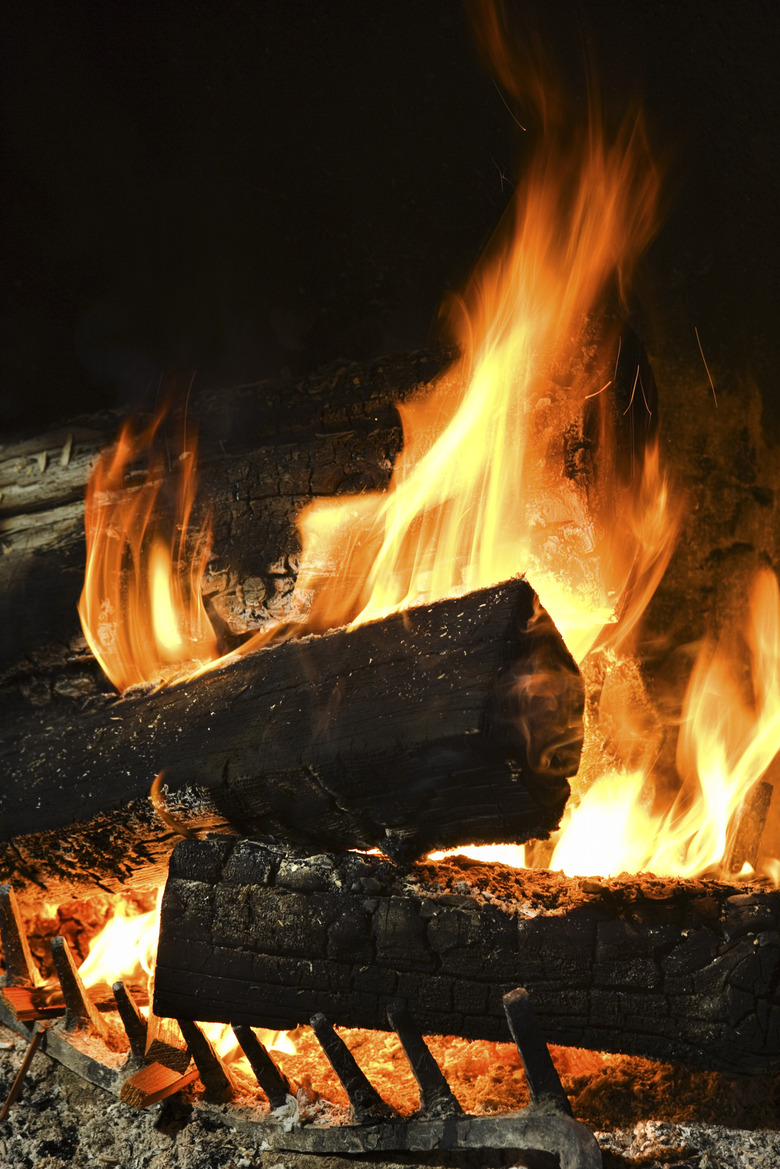Does A Fireplace Dehumidify?
A fireplace can either add water vapor or remove it from the air in a given room, depending on the fuel source and ventilation needs of the unit. In deciding which type of fireplace to incorporate into a home, a consumer must consider what type of heat she wants to introduce and how family members will react to increased or decreased humidity.
Vented Fireplace Effects
Vented Fireplace Effects
A vented fireplace has an integrated structure to remove smoke and other byproducts of material burning. This structure is usually a chimney made from brick or a flue system composed mainly of stainless steel. Because of this ventilation, any water vapor produced as a byproduct of combustion leaves the room. This results in a drier, less humid living space because the fire continues to consume oxygen while the chimney or flue expels carbon dioxide, water vapor and other particulate matter.
Ventless Fireplace Effects
Ventless Fireplace Effects
A ventless fireplace runs on natural gas, including butane or propane, and does not produce the harmful emissions that require a wood-burning fireplace to have a suitable ventilation system. Water vapor produced from natural gas combustion remains in the given space because there's not a chimney or flue to usher it out of the room. This increases the humidity in the immediate area and could make the temperature in the room with the fireplace seem higher than it actually is. A room with greater than 30 percent humidity could begin to feel uncomfortable or too hot.
Air Pollution/Health Hazards
Air Pollution/Health Hazards
Increasing humidity in a room with a ventilated fireplace could be a sign of a clogged flue system or chimney. A clogged chimney also can increase indoor air pollution in the home and introduce hazardous chemicals, including carbon monoxide. Left unabated, prolonged exposure to carbon monoxide causes significant respiratory ailments, nausea, headaches, lethargy and death. A ventless fireplace could develop leaks or breaks in seals designed to hold natural gas. This poses a health hazard for everyone in the home because natural gas is highly combustible in the presence of oxygen and even a tiny spark.
Controlling the Flame
Controlling the Flame
A fire burning too hot or too large for a given space can remove too much water vapor from the air. Over time, the dry air removes moisture from surrounding wooden structures, resulting in cracking. The dry climate can also increase respiratory difficulties for people with sensitive sinuses. By contrast, a ventless fireplace that's too big for the space can rapidly increase the humidity in the air and even encourage the development of bacteria and mold on porous surfaces, including wood and drywall.
